Beginning date 1872 | ||
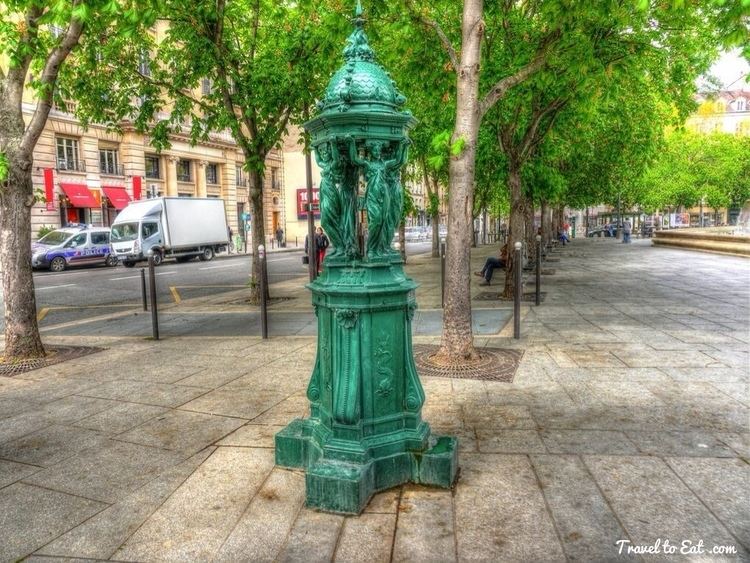 | ||
Similar Fontaine des Innocents, Fontaine Saint‑Michel, Place Saint‑Sulpice, Pavillon de l'eau, Place du Tertre | ||
Travel in paris 3 wallace fountains
Wallace fountains are public drinking fountains designed by Charles-Auguste Lebourg that appear in the form of small cast-iron sculptures scattered throughout the city of Paris, France, mainly along the most-frequented sidewalks. They are named after the Englishman Richard Wallace, who financed their construction. A great aesthetic success, they are recognized worldwide as one of the symbols of Paris. A Wallace Fountain can be seen outside the Wallace Collection in London, the gallery that houses the works of art collected by Sir Richard Wallace and the first four Marquesses of Hertford.
Contents
- Travel in paris 3 wallace fountains
- Les fontaines wallace wallace fountains weekend in paris
- Background
- Sir Richard Wallace
- Why fountains
- Conception
- Sculptor
- Different models
- Large model
- Wall mounted model
- Small model
- Colonnade model
- Placement
- Today
- The 67 large model fountains
- The 11 small model fountains
- The 2 colonnaded fountains
- The wall mounted model
- Nantes
- Bordeaux
- Agen
- Clermont Ferrand
- Puteaux
- Saint Denis Runion
- Toulon
- Pau
- Private ownership
- Outside France
- Europe
- Americas
- Middle East
- Asia
- References

Les fontaines wallace wallace fountains weekend in paris
Background
During the Franco-Prussian War, Paris went through difficult times. The city was quickly rebuilt, despite the ravages it had suffered. In less than ten years, it was transformed, with new buildings (the Paris Opera, for example) and new boulevards (the Raspail and the St-Germain). Additionally, philanthropy was in fashion among the wealthy bourgeoisie, who financed numerous "good works" (such as the Red Cross and the Salvation Army) in order to uphold their image.
Sir Richard Wallace
Among these philanthropists, Sir Richard Wallace (1818–1890) was one of the most eclectic and reserved. Having inherited a large fortune from his father in August 1870, he decided that all Parisians should profit from it, which made him popular. Wallace's devotion led him to remain in his Parisian villa even as the city was besieged, rather than take refuge on one of his palatial estates, to be in Paris when he was needed.
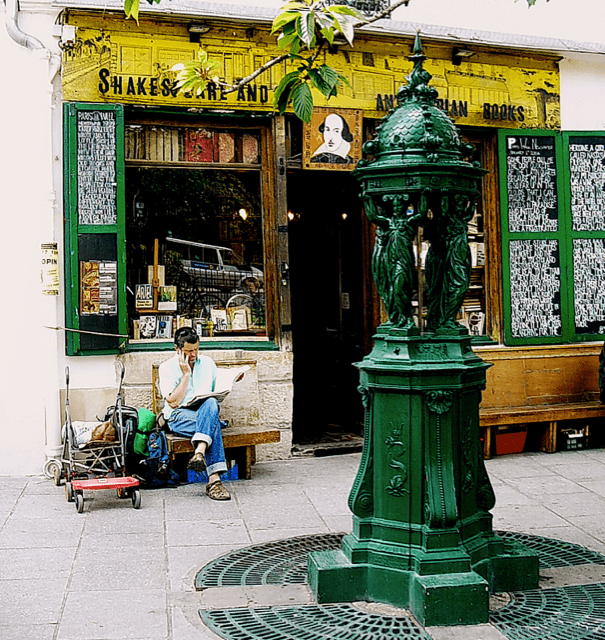
He founded a hospital, where he personally welcomed victims of the bombings and distributed supplies, among his other efforts on behalf of Parisians at war. He remained faithful to his adopted nation, France, and is buried at Père Lachaise Cemetery.
Of his numerous contributions to Parisian heritage, the best known today are the fountains which bear his name.
Why fountains?
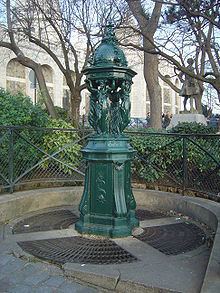
As a result of the siege of Paris and the Commune episode, many aqueducts had been destroyed, and the price of water, already higher than normal, went up considerably. Because of this, most of the poor had to pay for water. Moreover most of the water carted about by vendors was drawn from the Seine river and was thus highly likely to be dirty; all the waste water from the streets and many of the sewers draining directly into it. It was therefore safer to drink beer or other alcoholic beverages and almost as cheap as water. The temptation to take to liquor was strong among the lower classes, and it was considered a moral duty to keep them from falling into alcoholism. Even today, when water and hygiene are not a problem for the majority of Parisians, these fountains are often the only sources of free water for the homeless.
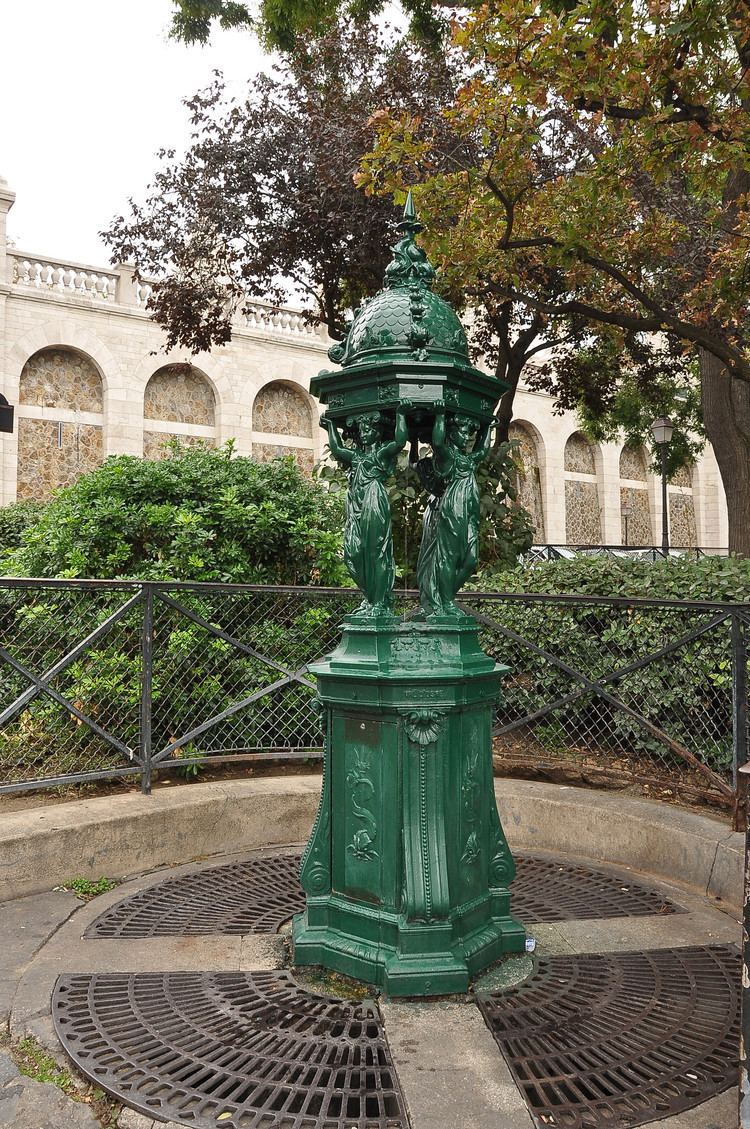
The poor are not the only beneficiaries of these installations. Even if the aim of the fountains was to allow people of modest means to have access to drinking water, they are not the only ones who use them. Anyone passing by, rich or poor, may quench his thirst, fulfilling this vital need in equal fashion. There was already a programme of constructing temperance fountains in both the United States and in the United Kingdom.

Not only did the fountains accomplish Wallace's philosophy of lending a hand to those in need, but they also served to beautify Paris.
Conception
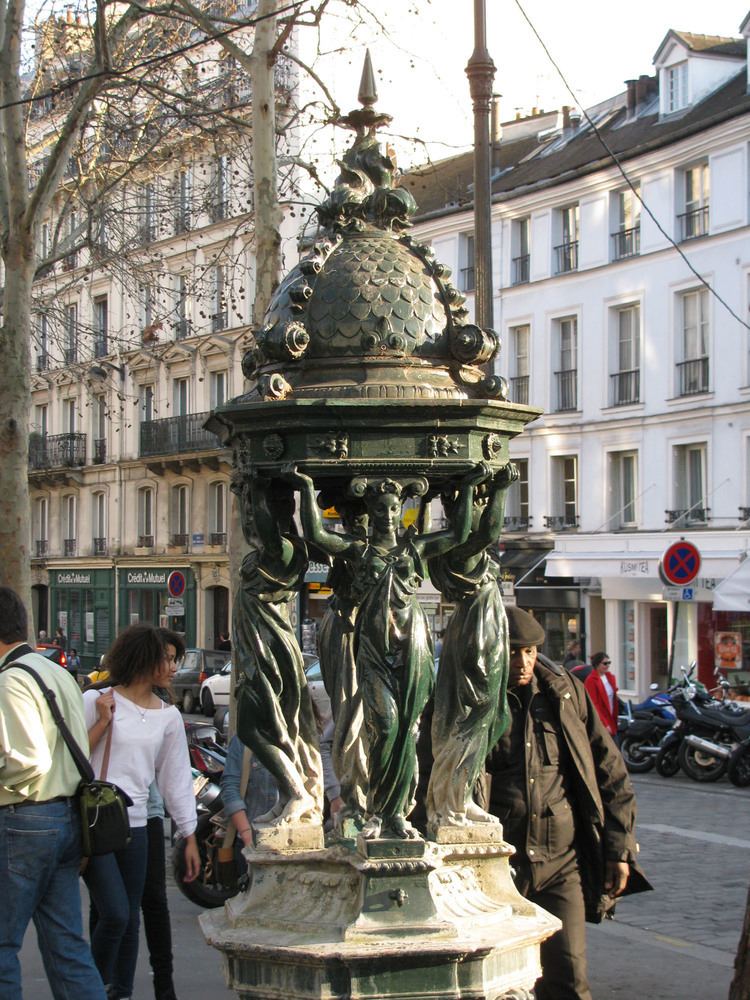
Richard Wallace designed the fountains himself and intended them to be beautiful as well as useful. The fountains had to meet several strict guidelines:
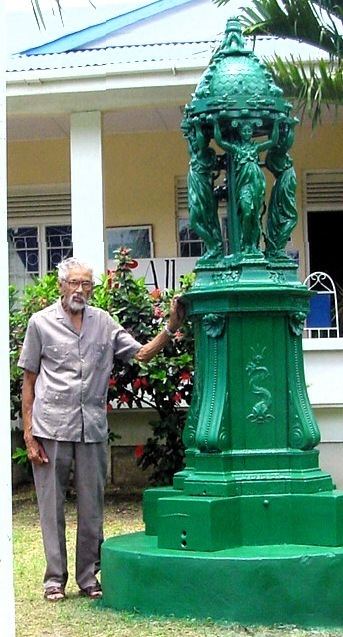

The locations, as well as the color (a dark green, like all urban development of that era, in order to blend in with the parks and tree-lined avenues), were quickly decided upon by the city government.
Wallace created two different models, which were followed by two additional models, so, in all, there were four types of Wallace fountains varying in such properties as height and motif. The material that was used to create them was cast-iron. Inexpensive, easy to mold, and robust, it was one of the most popular materials of the age. The majority of the cost was paid for by Wallace. The city of Paris allocated 1,000 francs for the large model and 450 francs for the wall-mounted model.
Sculptor
Wishing that his project be completed as rapidly as possible, Wallace called on Charles-Auguste Lebourg, a sculptor from Nantes whom he knew and whose talents were already renowned. Lebourg improved Wallace's sketches, already studied and thought-provoking, to make the fountains true works of art.
For the large model, Lebourg created four caryatids representing kindness, simplicity, charity and sobriety. Each one is different from her sisters, by the way she bends her knees and by where her tunic is tucked into her blouse.
Different models
The first two models (large model and applied model) were conceived and financed by Sir Richard Wallace, from whom they get their name. The two other models were created following the success of their predecessors inspired by the same styles and the resemblance is obvious. However, the more recent designs are not as strongly steeped in Wallace's aesthetic ideals, that in true Renaissance style, they should be useful, beautiful, and symbolic, in addition to being real works of art.
Large model
(size: 2.71 m, 610 kg)
The large model was conceived by Sir Richard Wallace, and was inspired by the Fontaine des Innocents. On a foundation of Hauteville stone rests an octagonal pedestal on which four caryatids are affixed with their backs turned and their arms supporting a pointed dome decorated by dolphins.
The water is distributed in a slender trickle issuing from the center of the dome and falls down into a basin that is protected by a grille. To make distribution easier, two tin-plated, iron cups attached to the fountain by a small chain were at the drinker's desire, staying always submerged for more cleanliness. These cups were removed in 1952 "for Hygiene reasons" by demand of the Council of Public Hygiene of the old Department of the Seine.
For more information, see the Technical File (in French).
Wall-mounted model
(size: 1.96 m, 300 kg)
Sir Richard's other model. In the middle of a semi-circular pediment, the head of a naiad issues a trickle of water that falls into a basin resting between two pilasters. Two goblets allowed the water to be drunk, but they were retired under edict of the 1952 law cited above. This model, costing little to install, was to have been many units along the lengths of the walls of buildings with strong humanitarian focus, e.g. hospitals. This was unfortunately not the case and they do not remain today except for one situated on rue Geoffroy Saint-Hilaire.
Small model
(size: 1.32 m, 130 kg)
These are simple pushbutton fountains that one can find in squares and public gardens and are marked with the Parisian Seal (although the one installed on the Place des Invalides doesn't have this seal). They are very familiar to mothers who bring their children to play in the many small parks in Paris.
Measuring only 4'-3" and weighing 286 lbs., they were commissioned by the mayor of Paris more frequently than its older sister models.
Colonnade model
(size: 2.50 m, a little more than 500 kg)
This model was the last to be realized. The general shape resembles that of the Large Model and the caryatids were replaced with small columns to reduce the cost of fabrication. The dome was also less pointy and the lower part more curved.
Although thirty of these were made, today there remain only two, one on rue de Rémusat and the other on avenue des Ternes.
Placement
The choice of the location of the fountains was left to the city of Paris. They needed to be placed at the will of the public in a practical manner and integrated in the most harmonious fashion with the environment. Most were placed in squares or at the intersections of two roads. This made Eugene Belgrand (a hydraulic engineer, Director of Water and Sewers of Paris; he worked with the prefect Georges Haussmann) responsible for the choice, and one can consider that they were made in a judicious manner.
Today
Most of the fountains still present in the city still work, and distribute, contrary to popular belief, perfectly potable water. They are the rare points of free water in the city to the great relief of the homeless for whom they are a life-source and the thirst of passers-by which the fountains often quench. Sir Richard Wallace has achieved his goal and probably fulfilled his hopes.
The fountains work from 15 March to 15 November (the risk of freezing during the months of winter would imperil the internal plumbing), are regularly maintained, and repainted every two years.
They are an integral part of the Parisian landscape, typical and picturesque, of the same importance as the Eiffel Tower or the street urchins of Montmartre, as their creators would have wished. In Amélie, the cinegraphic piece about the glory of Parisian folklore, Jean-Pierre Jeunet baptised a personality Madeleine Wallace (she cried like a madeleine, or like a Wallace fountain), although the English subtitled version renamed the character of Madeleine, to Madeleine Wells for cultural understanding.
For more than a century they have been in place, and these monuments have never had to suffer criticism. They were always respected. However, curiously, they are not classified as "historic monuments".
The 67 large model fountains
3rd arrondissement
4th arrondissement
5th arrondissement
6th arrondissement
8th arrondissement
9th arrondissement
10th arrondissement
11th arrondissement
12th arrondissement
13th arrondissement
14th arrondissement
15th arrondissement
16th arrondissement
17th arrondissement
18th arrondissement
19th arrondissement
20th arrondissement
The 11 small model fountains
4th arrondissement
7th arrondissement
11th arrondissement
13th arrondissement
15th arrondissement
17th arrondissement
The 2 colonnaded fountains
16th arrondissement
17th arrondissement
The wall-mounted model
5th arrondissement
Nantes
The sculptor who created the fountains, Charles Auguste Lebourg, was originally from Nantes. In addition to the Parisian fountains, a few were placed in Nantes in honor of their creator:
Bordeaux
On 6 October 1873, another philanthropist, Daniel Osiris, ordered six Large Model Fountains and asked the community of Bordeaux to install them. Three surviving fountains are to be found at:
More recent fountains are to be found at:
Agen
Clermont-Ferrand
Puteaux
Saint-Denis, Réunion
Toulon
Pau
Private ownership
Some wealthy people with artistic interests, as well as celebrity artists, bought them for their pleasure. This was the case with Maurice Chevalier, who had them in his ownership in Marnes-la-Coquette, and Brigitte Bardot.
Outside France
Including Barcelona, Germany, Portugal, Italy, England, Northern Ireland, Zürich, Rio de Janeiro, Canada (Quebec), New Orleans, Montevideo, Jordan, Israel, and Macau.
Africa
Mozambique
The fountain is in the Jardim Tunduru Botanical Gardens in Maputo.
Europe
Spain
Italy
Northern Ireland
Switzerland
Zürich
Americas
Brazil
Rio de Janeiro
Quebec, Canada
Louisiana, United States
Uruguay
Middle East
Jordan
Israel
Asia
Macau SAR
The Wallace Fountain in Macau is known as 和麗女神噴泉 in Chinese and A Fonte Wallace in Portuguese.
